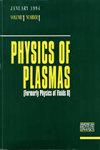用格林函数增强机器学习的 Grad-Shafranov 平衡重构
IF 2.2
3区 物理与天体物理
Q3 PHYSICS, FLUIDS & PLASMAS
引用次数: 0
摘要
这项研究提出了一种预测托卡马克聚变实验和反应堆中等离子体平衡的方法。该方法包括利用 EFIT-AI 平衡数据库中等离子体环向电流密度 (Jt) 的主成分分析,将等离子体电流表示为基函数的线性组合。然后利用 EFIT 的格林函数表,为极环通量(ψ)创建基函数,并根据环形电流(Jt)进行诊断。与物理信息神经网络(NN)的概念类似,这种物理方法可确保ψ、Jt 和合成诊断之间的一致性。首先,利用最小二乘法技术的预测能力,使合成诊断结果的误差最小化。结果表明,该方法预测 ψ 的准确度较高,预测 Jt 的准确度适中,中位数 R2 = 0.9993 和 R2 = 0.978。此外,还采用了一种使用网络架构搜索的综合 NN 来预测基函数系数。与最小二乘法相比,NN 的性能明显更好,对 Jt 和 ψ 的中位数 R2 分别为 0.9997 和 0.9916。通过最小二乘法填补缺失数据来处理缺失或错误数据,对该方法的稳健性进行了评估,结果表明,即使减少诊断数据的数量,NN 的预测能力仍然很强。此外,该方法还在训练范围之外的等离子体上进行了测试,结果显示是合理的。本文章由计算机程序翻译,如有差异,请以英文原文为准。
Augmenting machine learning of Grad–Shafranov equilibrium reconstruction with Green's functions
This work presents a method for predicting plasma equilibria in tokamak fusion experiments and reactors. The approach involves representing the plasma current as a linear combination of basis functions using principal component analysis of plasma toroidal current densities (Jt) from the EFIT-AI equilibrium database. Then utilizing EFIT's Green's function tables, basis functions are created for the poloidal flux (ψ) and diagnostics generated from the toroidal current (Jt). Similar to the idea of a physics-informed neural network (NN), this physically enforces consistency between ψ, Jt, and the synthetic diagnostics. First, the predictive capability of a least squares technique to minimize the error on the synthetic diagnostics is employed. The results show that the method achieves high accuracy in predicting ψ and moderate accuracy in predicting Jt with median R2 = 0.9993 and R2 = 0.978, respectively. A comprehensive NN using a network architecture search is also employed to predict the coefficients of the basis functions. The NN demonstrates significantly better performance compared to the least squares method with median R2 = 0.9997 and 0.9916 for Jt and ψ, respectively. The robustness of the method is evaluated by handling missing or incorrect data through the least squares filling of missing data, which shows that the NN prediction remains strong even with a reduced number of diagnostics. Additionally, the method is tested on plasmas outside of the training range showing reasonable results.
求助全文
通过发布文献求助,成功后即可免费获取论文全文。
去求助
来源期刊

Physics of Plasmas
物理-物理:流体与等离子体
CiteScore
4.10
自引率
22.70%
发文量
653
审稿时长
2.5 months
期刊介绍:
Physics of Plasmas (PoP), published by AIP Publishing in cooperation with the APS Division of Plasma Physics, is committed to the publication of original research in all areas of experimental and theoretical plasma physics. PoP publishes comprehensive and in-depth review manuscripts covering important areas of study and Special Topics highlighting new and cutting-edge developments in plasma physics. Every year a special issue publishes the invited and review papers from the most recent meeting of the APS Division of Plasma Physics. PoP covers a broad range of important research in this dynamic field, including:
-Basic plasma phenomena, waves, instabilities
-Nonlinear phenomena, turbulence, transport
-Magnetically confined plasmas, heating, confinement
-Inertially confined plasmas, high-energy density plasma science, warm dense matter
-Ionospheric, solar-system, and astrophysical plasmas
-Lasers, particle beams, accelerators, radiation generation
-Radiation emission, absorption, and transport
-Low-temperature plasmas, plasma applications, plasma sources, sheaths
-Dusty plasmas
 求助内容:
求助内容: 应助结果提醒方式:
应助结果提醒方式:


